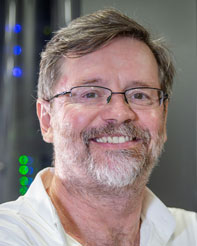

 Skip to navigation
Skip to navigation
Site Primary Navigation:
- About SDSC
- Services
- Support
- Research & Development
- Education & Training
- News & Events
Search The Site:

Published June 2024

Dear SDSC Staff, Collaborators, Partners and All Friends:
We are in the home stretch of this academic year and, as usual, I am not at a loss for news to share. My first piece of news this time is that the U.S. National Science Foundation (NSF) recently announced its contribution of $5 million toward Cosmos, SDSC’s new computing system that features AMD’s MI300A accelerated processing unit (APU)—the first data-center-class APU ever released, according to the project team, which is led by SDSC’s User Support Lead Mahidhar Tatineni and Co-PIs Subhashini Sivagnanam, Andreas Goetz, Igor Sfiligoi and Christopher Irving. Cosmos is our third Cat-II system after Voyager and PNRP, but it is unique in that its architecture is based on shared memory between CPU and GPU. This will accelerate the use of GPUs by community software packages. There will be more information to come about this new system, so please visit our website from time to time and look for future newsletter issues.
Ironically, or perhaps per the law of universal balance, as we bring Cosmos into orbit at SDSC, we retire Comet. First operational in 2015, Comet has been a petascale supercomputer designed to transform advanced scientific computing by expanding access and capacity among traditional as well as non-traditional research domains. The most recent use of Comet was by the CW3E team at Scripps Institution of Oceanography for their atmospheric rivers research and predictions. Comet was originally designed to meet the needs of what is often called the “long tail” of science—the concept that numerous modest-sized computationally based research projects collectively represent volumes of research that can lead to scientific advances and discovery.
Expanse, our supercomputing workhorse, which we installed at SDSC in 2020, continues its growth and increased productivity. The NSF has provided funding to us to add a feature we call Expanse AIR for the purposes of NAIRR, to increase the current Expanse system by 142 H100s. While the original Expanse continues to be allocable via NSF’s ACCESS program, Expanse AIR will be allocated via the NAIRR Pilot.
Another upgrade to our data center is AWARE, which will be used for atmospheric river forecasts by CW3E going forward. When installed this summer, it will be the densest CPU system at SDSC, with 13,824 cores of x86 capacity in a single liquid-cooled rack. Thus its single rack will provide roughly one-third the compute capacity of the retired 27-rack Comet system.
To support all of these new systems, and to prepare for more AI and high-performance computing systems to come, we are tripling our liquid cooling capacity across the West Data Center. The initial customers of that space, power and cooling will be: Cosmos, Expanse AIR, AWARE, TritonGPT, as well as growth of TSCC, the campus condo cluster.
After talking so much about systems, I will end by mentioning something dear to my heart—talking about our people at SDSC. We have added Chief of Staff Ashley Atkins, who is making a difference in the strategic direction and daily operations needed to achieve our center-wide goals. Please read more about her in the Around SDSC section below. In the same section, you’ll see that The Women in HPC affiliate at SDSC, led by Claire Stirm and Subha Sivagnanam, recently hosted its first mixer, coordinated by Avery Blas. I very much look forward to this initiative growing and thriving, possibly well beyond SDSC to include others at UC San Diego.
I hope you enjoy this issue’s selection of news and information, and I thank you for your continued interest in SDSC. Have an enjoyable and safe summer season.
Best wishes,
Frank Würthwein
SDSC Director